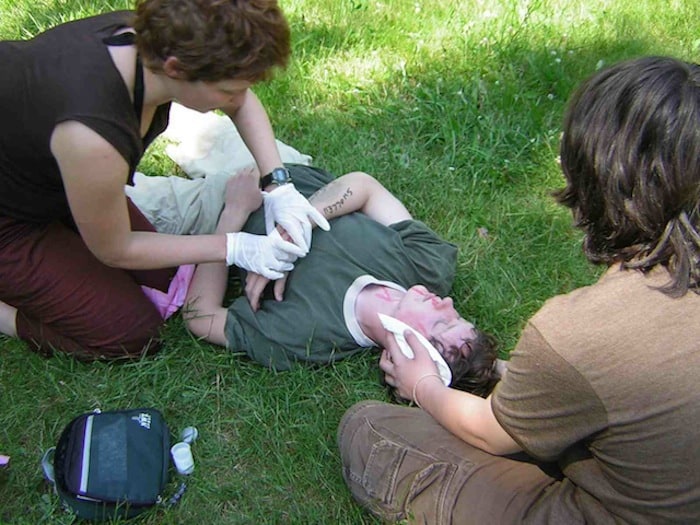Coming across a medical emergency in the backcountry can be a frightening experience. However, if you are prepared, and understand the importance of the Patient Assessment Pyramid, you will be able to quickly determine the care that will be needed for the condition of the patient.
Patient assessment in any sort of medical emergency is crucial to determining proper care. As a first responder, you must be able to quickly determine whether the patient’s condition is life-threatening or not and if so, that life-threatening condition must be fixed right away.

Patient assessment begins immediately upon arriving on the scene.Your observations of terrain, weather and position of the patient, may help give you clues to how the injury occurred.
Always make sure the scene you arrive upon is safe before giving care. If you become a victim due to an unsafe situation, then there may be no one else around who can help the first patient. The number one step in any emergency medical situation is to check the scene for safety.

Once you have determined that the scene is safe, it is vital to check for ABCDE–airway, breathing, circulation, disability and the environment. Are they breathing or bleeding severely? Have they hit their head and is there suspect for a head, neck or spine injury? Is the environment that the patient is in a threat?
The next steps once you have determined that the patient is breathing and not bleeding severely (which would be a stop and fix immediately situation) would be to perform a focused exam and history.
It is wise to always assume a head injury and stabilize the head and neck. Once you have done a focused exam and a focused spinal exam, you may at that time determine whether or not to release the patient’s head from in-line stabilization.
Always do a thorough head-to-toe exam of the patient to make sure there are not injuries that the patient may not be aware of. Often, a patient can become distracted by pain, such as a broken ankle and not notice that they are bleeding elsewhere. Look, listen and feel. Ask lots of questions. How does it hurt? Quality of the pain? Onset of the pain? Begin a comprehensive head-to-toe physical examination. Feel for deformities and abnormal bulges; look for bruising; smell for unusual odors. Explain to the patient what you are doing, to help make them feel at ease.
Vital signs are critical for patient management. Vital signs are the best way for the responder to understand what is going on with the patient. Vital signs include checking the heart rate, respiratory rate, skin color and temperature and level of responsiveness.
Make sure that you take a set of vital signs and record the time. Monitor the patient and take a second and third set every 15-20 minutes. The initial set of vital signs provide baseline data on the patient’s condition. Watch closely for changing vital signs. Is the heart rate elevating and becoming irregular? If so, your patient may be going into shock.
Moving forward in your patient assessment, begin your SAMPLE. Symptoms, Allergies, Medications, Pertinent medical history, Last input and output, Events leading up to the accident or illness. The SAMPLE is crucial in helping you to determine the patient’s condition. Drinking too much water and not eating enough food in a hot environment is treated quite differently than someone who has had too little water in the same conditions. Only by taking a thorough SAMPLE can you determine proper care of any condition that you find the patient in.
Documentation is a critical component of the Patient Assessment. Documentation of what you find helps to visualize the “big picture” of the patient’s condition. Always carefully note the time that you take the vital signs, write down patient complaints and denials. If you ask the patient if they think they hit their head and they deny that–write that down! Documentation will help you monitor the patients progress and can significantly help advanced medical personnel to quickly see the patient’s changing conditions.
And finally, vigilantly monitor the patient. Keep asking them questions, re-check vital signs, check for circulation, sensation and motion on the extremities. Keep them calm and reassured and determine whether this medical emergency is a Stay or Go situation.
It can be helpful to carry a small Patient Assessment Pyramid card in your first aid kit. Some companies have the pyramid printed on a bandanna or even on the side of a water bottle. Review the steps before you begin an adventure and you will feel prepared to efficiently evaluate a patient in a medical emergency.

Editors Note: Kristina Hall is a certified Red Cross instructor, a Wilderness First Aid instructor, is Overland Certified and is a 4wd instructor for Land Rover North America. Kristina is a long-time member of Expedition Portal.


